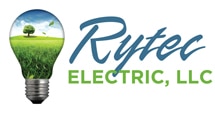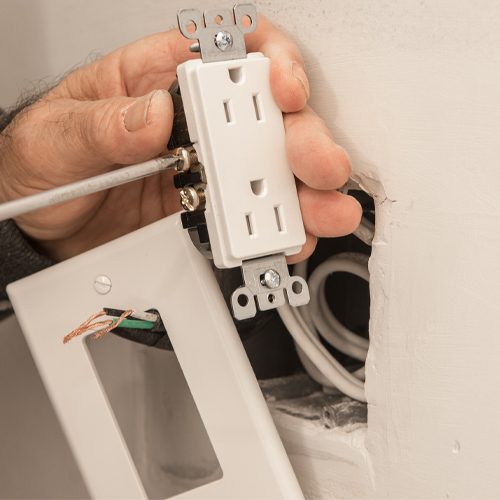Are Two Prong Outlets Safe?
Older homes often have at least a few two-pronged outlets. For a lot of people, these are a phenomenon they have only heard about. Three prong outlets have been the standard for so long that younger generations might not even know they once existed. But are those outlets safe to use, or should you upgrade to a three-prong outlet? Here’s what you need to know.
What’s the difference?
To understand why two-prong outlets might not be as safe as their three-prong counterparts, you must first understand the difference between the two. It is much more complex than simply how many prongs the plug or outlet has.
Three-prong Outlets
You see these outlets everywhere. Any home, business, or building built after 1962 have been wired with three-prong outlets. In addition, most of the appliances or devices that you want to plug in are going to have three prongs.
The third prong on an outlet is for grounding. It is connected to a grounding wire that keeps the energy grounded from the outlet to the power box. If there is a short circuit or other malfunction, that grounding prong could save you from a burnt outlet or appliance. It also makes your outlet less likely to give you a shock.
Two-prong Outlets
A lot of young adults have never seen a two-prong outlet. These outlets used to be standard, and they can still be found in some older homes, older office buildings, or older schools that have not been completely upgraded.
A two-prong outlet doesn’t have that third grounding prong. That means that the outlet and the path back to the breaker box are charged continuously, making electric shock and circuit malfunction more likely, leading to expensive electrical repair.
Even though two-prong outlets are not illegal, there are some guidelines by the National Electrical Commission that address the replacement or upgrade of these outlets in homes. The 2020 National Electrical Code provides these guidelines and instructions about exceptions.
A Brief History of Grounding Outlets
In the grand scheme of things, we haven’t had widespread electricity throughout our communities for that long at all. Even though electricity was used to power factories and other commercial applications, it didn’t start becoming common in homes until the mid- to late-1930s.
Two prong outlets were used from the 1930s all the way through the 60s. Some three-prong outlets were recommended before that year, primarily for major appliances. The first residential recommendations for grounded outlets were in 1947 for laundry. These outlets have been the required standard for all homes and buildings since 1962. Get some more interesting history tidbits here.
How to Use 2-prong Outlets
Other than mobile devices and small appliances like fans or toasters, you’re not going to see too many two-prong plugs in your home. The vast majority of your electronics, computer equipment, and appliances are going to be using a three-prong grounding plug. So how do you plug these into a 2-prong outlet?
Do not bend or break off the third prong of the plug. While the appliance will still work without that third prong, breaking it off presents a serious shock and fire hazard. Instead, try using an outlet adapter for minor appliances or devices.
Do not plug a space heater into a power strip or outlet adapter. Space heaters and some other appliances can heat up an ungrounded outlet and the outlet adapter, burning up both and posing a fire hazard to the rest of your home. It is best to avoid adapters in these situations and simply call your local electrician to rewire the outlet.
If you frequently find yourself using outlet adapters or hunting for a grounded outlet elsewhere in your home, it could be time to hire an electrician to ground two-prong outlets in your home permanently.
Upgrading or Replacing Your Two-Prong Outlets
When deciding whether to upgrade or replace your old outlets, you need to consider how much effort and expense will be involved. If the outlets are able to be easily grounded with a small amount of wiring and new outlet installation, you may be able to upgrade the outlet quickly and for a budget-friendly cost.
On the other hand, if your entire wiring needs to be upgraded in order to add a grounding wire to those outlets, the project could become much more complex and expensive. In the end, the only way you are going to know which way to go is to have a complete residential electrical inspection, recommendations, and estimate.
Don’t wire a new outlet on your own. There are some safety precautions and methods that need to be used to maintain safety and prevent electrical shock. For that reason, you shouldn’t attempt such electrical repairs or upgrades without the appropriate training. Schedule with one of our expert technicians instead.
Are you tired of hunting through the rooms of your home looking for an appropriate outlet? Do you frequently find yourself moving things around so that you have the right type of outlet for the right plugs?
Do you need residential electrical repair or outlet upgrades to make your home work for you? Contact us today for electrical upgrades or new outlet installation.
When In Doubt, Get a Free Estimate
Your home’s electrical system is one of the most important things to be aware of as a homeowner. A faulty or failing electrical system could cost you thousands in repairs, or worse, cause a fire.
If you’re ever unsure of whether or not you have an electrical problem, don’t gamble. It’s always better to call a licensed electrician and get a free estimate.


